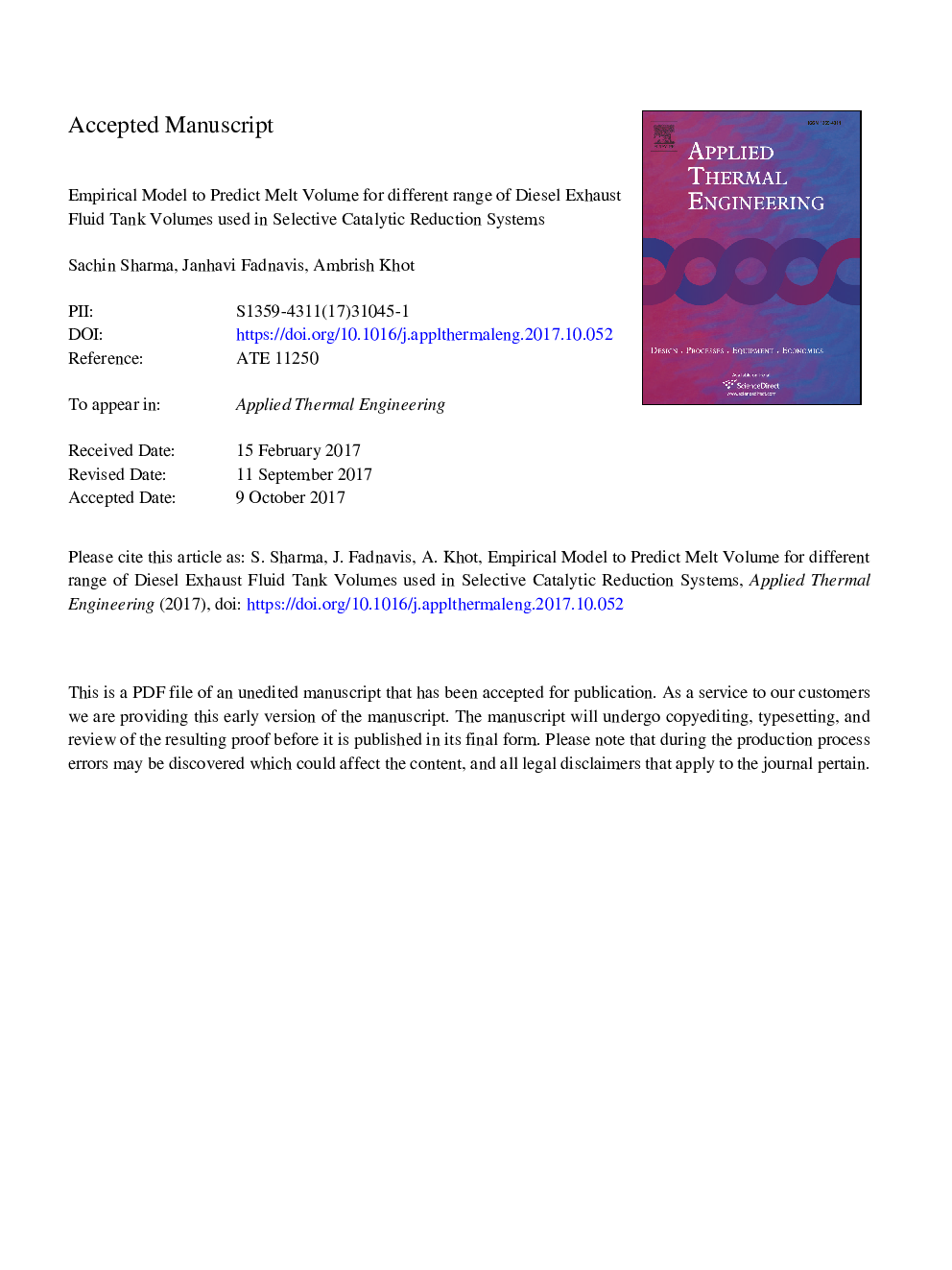| کد مقاله | کد نشریه | سال انتشار | مقاله انگلیسی | نسخه تمام متن |
|---|---|---|---|---|
| 7046551 | 1457100 | 2018 | 34 صفحه PDF | دانلود رایگان |
عنوان انگلیسی مقاله ISI
Empirical model to predict melt volume for different range of diesel exhaust fluid tank volumes used in selective catalytic reduction systems
ترجمه فارسی عنوان
مدل تجربی برای پیش بینی حجم ذوب برای محدوده های مختلف حجم مخازن مایع اگزوز دیزل مورد استفاده در سیستم های کاهش کاتالیستی انتخابی
دانلود مقاله + سفارش ترجمه
دانلود مقاله ISI انگلیسی
رایگان برای ایرانیان
کلمات کلیدی
موضوعات مرتبط
مهندسی و علوم پایه
مهندسی شیمی
جریان سیال و فرایندهای انتقال
چکیده انگلیسی
Technologies such as Selective Catalytic Reduction (SCR) assists in complying with diesel emission limits for NOx. Diesel Exhaust Fluid (DEF) which is an aqueous urea solution plays an important role in SCR systems. DEF freezes at approximately â11â¯Â°C due to which it becomes a challenge to meet regulations which state that, NOx emissions must be under regulatory limits within 70 min of engine starting. Hence, it is important to ensure DEF melts within stipulated time so that the system is ready to reduce engine out NOx. Prediction of melt volume is an important performance parameter used to compare different DEF tank designs. In this paper, empirical models are identified from various studies done in the past and selection of suitable models for wide range of SCR applications is done. Models were selected which predicts melt volume w.r.t time for vertical heating arrangements for different tank sizes, aspect ratios and shapes i.e. rectangular and cylindrical enclosures used worldwide. This empirical model is compared with experiment data and also with previous literature to understand its robustness and feasibility for different geometries. New hybrid approach was also identified to predict melt volumes for helical heater arrangements within acceptable percentage error range.
ناشر
Database: Elsevier - ScienceDirect (ساینس دایرکت)
Journal: Applied Thermal Engineering - Volume 129, 25 January 2018, Pages 916-926
Journal: Applied Thermal Engineering - Volume 129, 25 January 2018, Pages 916-926
نویسندگان
Sachin Sharma, Janhavi Fadnavis, Ambarish Khot,
